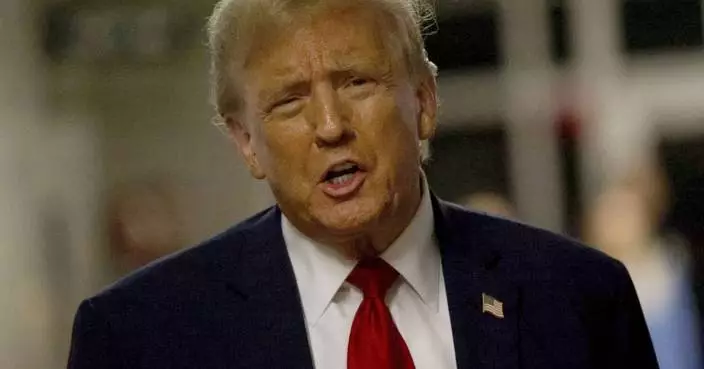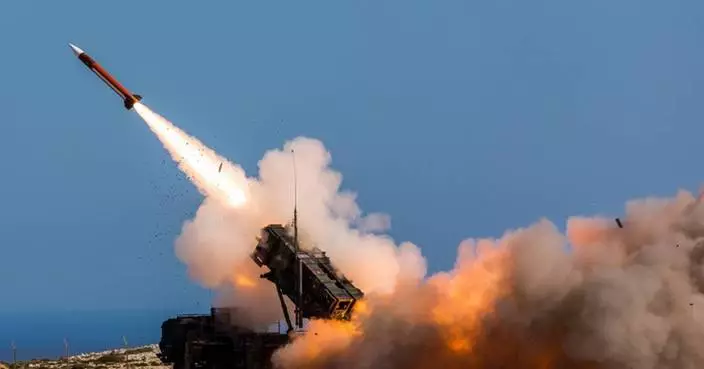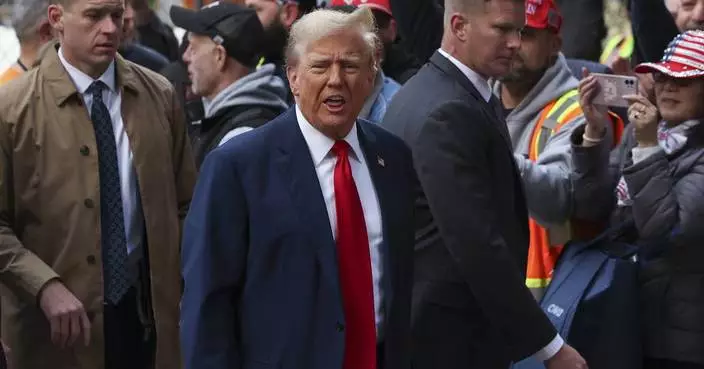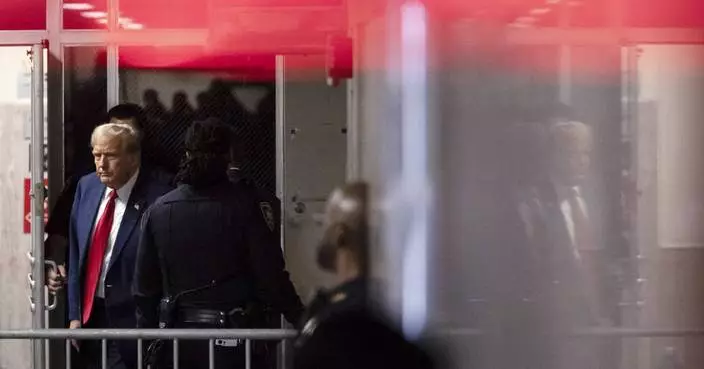California Gov. Jerry Brown accepted President Donald Trump's call to send the National Guard to the Mexican border, but rejected the White House's portrait of a burgeoning border crisis and insisted that his troops will have nothing to do with immigration enforcement.

In this April 10, 2018 frame from video, a National Guard troop watches over Rio Grande River on the border in Roma, Texas. The deployment of National Guard members to the U.S.-Mexico border at President Donald Trump's request was underway Tuesday with a gradual ramp-up of troops under orders to help curb illegal immigration. (AP Photo/John Mone)
The Democratic governor broke a week of silence Wednesday by agreeing to contribute 400 troops, though not all will be on the border. Brown's commitment brought pledges from the four states that border Mexico just shy of the low end of the president's target to marshal 2,000 to 4,000 troops.
Brown cast his decision as a welcome infusion of federal support to fight transnational criminal gangs and drug and firearms smugglers.
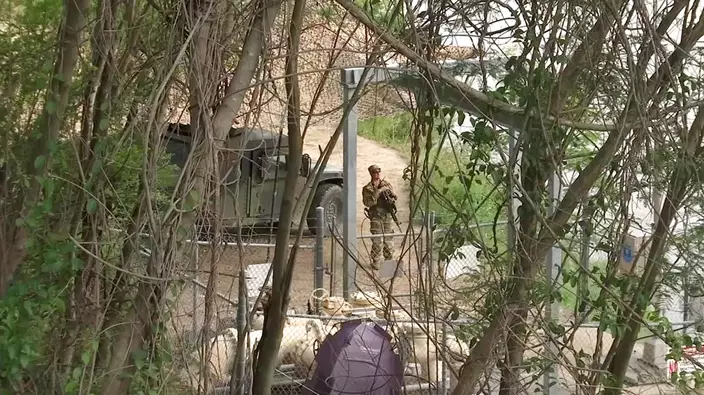
In this April 10, 2018 frame from video, a National Guard troop watches over Rio Grande River on the border in Roma, Texas. The deployment of National Guard members to the U.S.-Mexico border at President Donald Trump's request was underway Tuesday with a gradual ramp-up of troops under orders to help curb illegal immigration. (AP Photo/John Mone)
"Combating these criminal threats are priorities for all Americans - Republicans and Democrats," Brown wrote in a letter to Defense Secretary James Mattis and Homeland Security Secretary Kirstjen Nielsen.
Federal law, notably the Posse Comitatus Act of 1878, sharply limits military involvement in civilian law enforcement, creating a supporting role for the Guard. The Pentagon said last week that troops won't perform law enforcement functions or interact with people detained by border authorities without its approval.
Brown released a proposed agreement with the federal government that emphasizes the widely shared understanding of the Guard's limited role but explicitly bans any support of immigration enforcement. It says troops cannot guard anyone in custody for immigration violations or participate in construction of border barriers.
The White House praised Brown's decision without addressing his comments on immigration enforcement.
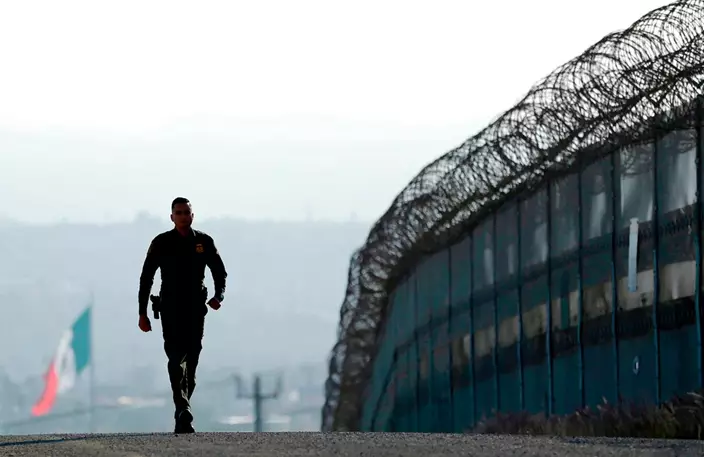
FILE - In this June 22, 2016 file photo, Border Patrol agent Eduardo Olmos walks near the secondary fence separating Tijuana, Mexico, background, and San Diego in San Diego. California Gov. Jerry Brown agreed Wednesday, April 11, 2018. (AP Photo/Gregory Bull, File)
"We're also glad to see California Gov. Jerry Brown work with the administration and send members of the National Guard to help secure the southern border," White House Press Secretary Sarah Huckabee Sanders said.
Reaction in California was limited, with few of Brown's allies or opponents weighing in.
State Sen. Kevin de Leon, a Democratic U.S. Senate candidate and author of California's so-called sanctuary state law, said Guard deployment was unnecessary and not a good use of resources. But he said more can be done to combat border crime and that he appreciated Brown's design of "a clear and limited mission focused on real public safety threats."
"I am confident Governor Brown will not use our National Guard to harass or tear apart immigrant families in California," he said in a statement.
Rob Stutzman, who advised former Republican Gov. Arnold Schwarzenegger, praised the decision on Twitter, calling Brown's decision to accept money for using the Guard to fight drugs and human trafficking "good government."
Immigration advocacy groups were generally quiet, although some were skeptical.
Pedro Rios, director for the American Friends Service Committee's U.S.-Mexico border program in San Diego, questioned why Brown would send troops while rejecting Trump's premise that they are needed to help stop illegal immigration.
"If he's in disagreement with Donald Trump about the justifications for having the National Guard on the border, then why would he accept it?" he said.
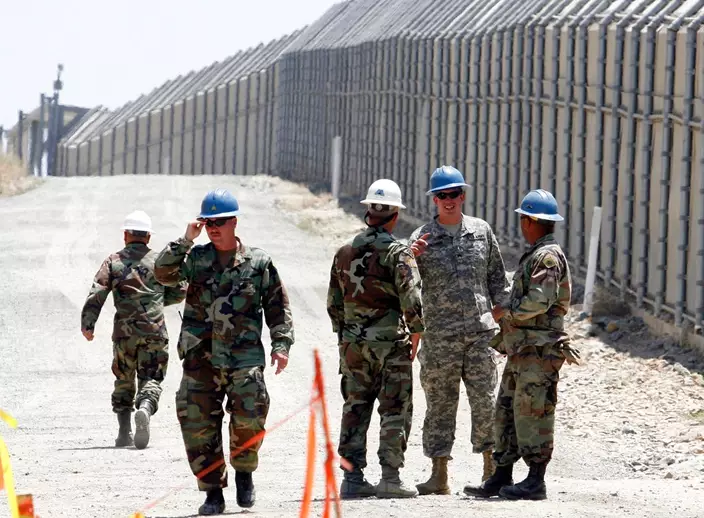
FILE - In this June 21, 2006, file photo, members of the California National Guard work next to the U.S.-Mexico border fence near the San Ysidro Port of Entry in San Diego. California Gov. Jerry Brown agreed Wednesday, April 11, 2018. (AP Photo/Denis Poroy, File)
Unlike Republican governors in other border states, Brown disagreed with Trump's portrayal of a border spiraling out of control, noting that Border Patrol arrests fell to the lowest level last year since 1971 and that California accounted for only 15 percent of the agency's arrests on the Mexican border.
"Here are the facts: there is no massive wave of migrants pouring into California," Brown wrote the Trump Cabinet members.
In contrast, Texas Republican Gov. Greg Abbott, who is contributing 1,000 troops, embraced Trump's mission the day it was announced, saying it would promote the rule of law and "help ensure we are doing everything we can to stem the flow of illegal immigration."
Brown said California's troops would join an existing program to combat transnational drug crime, firearms smuggling and human trafficking. About 250 California National Guard troops are already participating, including 55 at the border.
The new contingent of California Guard members being deployed could be posted at the border, the coast and elsewhere statewide, Brown said.
California deployed troops to the border under former Presidents George W. Bush in 2006 and Barack Obama in 2010.
NEW YORK (AP) — Defense lawyers in Donald Trump’s hush money trial are digging Friday into assertions of the former publisher of the National Enquirer and his efforts to protect Trump from negative stories during the 2016 election.
David Pecker returned to the witness stand for the fourth day as defense attorneys tried to poke holes in his testimony, which has described helping bury embarrassing stories Trump feared could hurt his campaign.
Pecker has painted a tawdry portrait of “catch and kill” tabloid schemes — catching a potentially damaging story by buying the rights to it and then killing it through agreements that prevent the paid person from telling the story to anyone else.
The cross-examination, which began Thursday, will cap a consequential week in the criminal cases the former president is facing as he vies to reclaim the White House in November.
The charges center on $130,000 in payments that Trump’s company made to his then-lawyer, Michael Cohen. He paid that sum on Trump’s behalf to keep porn actor Stormy Daniels from going public with her claims of a sexual encounter with Trump a decade earlier. Trump has denied the encounter ever happened.
Prosecutors say Trump obscured the true nature of those payments and falsely recorded them as legal expenses. He has pleaded not guilty to 34 felony counts of falsifying business records.
The case is the first-ever criminal trial of a former U.S. president and the first of four prosecutions of Trump to reach a jury.
Currently:
— Key moments from the Supreme Court arguments on Donald Trump’s immunity claims
— Trading Trump: Truth Social’s first month of trading has sent investors on a ride
— These people were charged with interfering in the 2020 election. Some are still in politics today
— Key players: Who’s who at Donald Trump’s hush money criminal trial
— The hush money case is just one of Trump's legal cases. See the others here
Here's the latest:
Former National Enquirer publisher David Pecker has testified in Donald Trump's hush money trial that he hatched a plan with Trump and former Trump henchman Michael Cohen in August 2015 for the tabloid to help Trump’s presidential campaign.
But under questioning by Trump’s lawyer, Pecker acknowledged Friday there was no mention at that meeting of the term “catch-and-kill,” which describes the practice of tabloids purchasing the rights to story so they never see the light of day.
Nor was there discussion at the meeting of any “financial dimension,” such as the Enquirer paying people on Trump’s behalf for the rights to their stories, Pecker said.
Pecker also acknowledged that the National Enquirer had been running negative stories about Trump’s 2016 rival Hillary Clinton and her husband, former President Bill Clinton, long before the August 2015 meeting. Pecker previously testified that stories about the Clintons boosted sales of the supermarket tabloid.
Donald Trump's lawyer Emil Bove is getting under the hood of the National Enquirer’s editorial process, seeking to show the tabloid had its own incentives unrelated to any deal with Trump, in the fourth day of testimony in the former president's hush money trial.
To underscore his point, Bove pulled up five unflattering headlines that ran in 2015 about Ben Carson, who ran against Trump in the 2016 GOP primary. Bove noted the information was pulled from publicly available information published in other outlets, including The Guardian.
In his testimony, former Enquirer publisher David Pecker, on the stand for a fourth day, acknowledged that it was standard practice at the publication to recycle stories from other outlets with a new slant.
“Because it’s good, quick and cost efficient, and you would’ve done it without President Trump?” Bove asked.
“Um, yes,” Pecker replied.
The jury’s day in Donald Trump's hush money trial began Friday with an instruction from the judge that it’s OK for prosecutors or defense lawyers to meet with witnesses ahead of a trial to help them prepare to testify.
That pertains to testimony that came out toward the end of Thursday, when Trump lawyer Emil Bove was cross-examining former National Enquirer publisher David Pecker.
Bove resumed questioning Pecker as the fourth day of testimony began in a Manhattan courtroom.
Donald Trump entered court Friday in his hush money trial in Manhattan carrying a thick stack of bound papers, which he said was a report put out by the U.S. House Judiciary Committee about the Manhattan District Attorney’s Office.
The former president said he had not read the report, “but it could be interesting.”
Trump told reporters that he wanted to wish his wife, former first lady Melania Trump, a happy birthday, saying, “It would be nice to be with her, but I’m in a courthouse.”
He said he planned to fly home to Florida, where she is, Friday evening after court wraps for the week.
Even by National Enquirer standards, testimony by its former publisher David Pecker at Donald Trump’s hush money trial this week has revealed an astonishing level of corruption at America’s best-known tabloid and may one day be seen as the moment it effectively died.
“It just has zero credibility,” said Lachlan Cartwright, executive editor of the Enquirer from 2014 to 2017. “Whatever sort of credibility it had was totally damaged by what happened in court this week.”
On Thursday, Pecker was back on the witness stand to tell more about the arrangement he made to boost Trump’s presidential candidacy in 2016, tear down his rivals and silence any revelations that may have damaged him.
A change in the court schedule means Donald Trump won’t be forced off the campaign trail next week to attend a hearing in his hush money criminal trial in New York.
Judge Juan M. Merchan moved a hearing on the former president’s alleged gag order violations to next Thursday, avoiding a conflict with his scheduled campaign events next Wednesday.
Merchan had initially set the hearing for next Wednesday, the trial’s regular off day. Trump is scheduled to hold campaign events that day in Michigan and Wisconsin. His lawyers have urged the judge not to hold any proceedings on Wednesdays so he can campaign.
The hearing — now set for 9:30 a.m. next Thursday, May 2 — pertains to a prosecution request that Trump be penalized for violating his gag order this week on four separate occasions.
The order bars Trump from making comments about witnesses and others connected to the case. Merchan is already mulling holding Trump in contempt of court and fining him up to $10,000 for other alleged gag order violations.
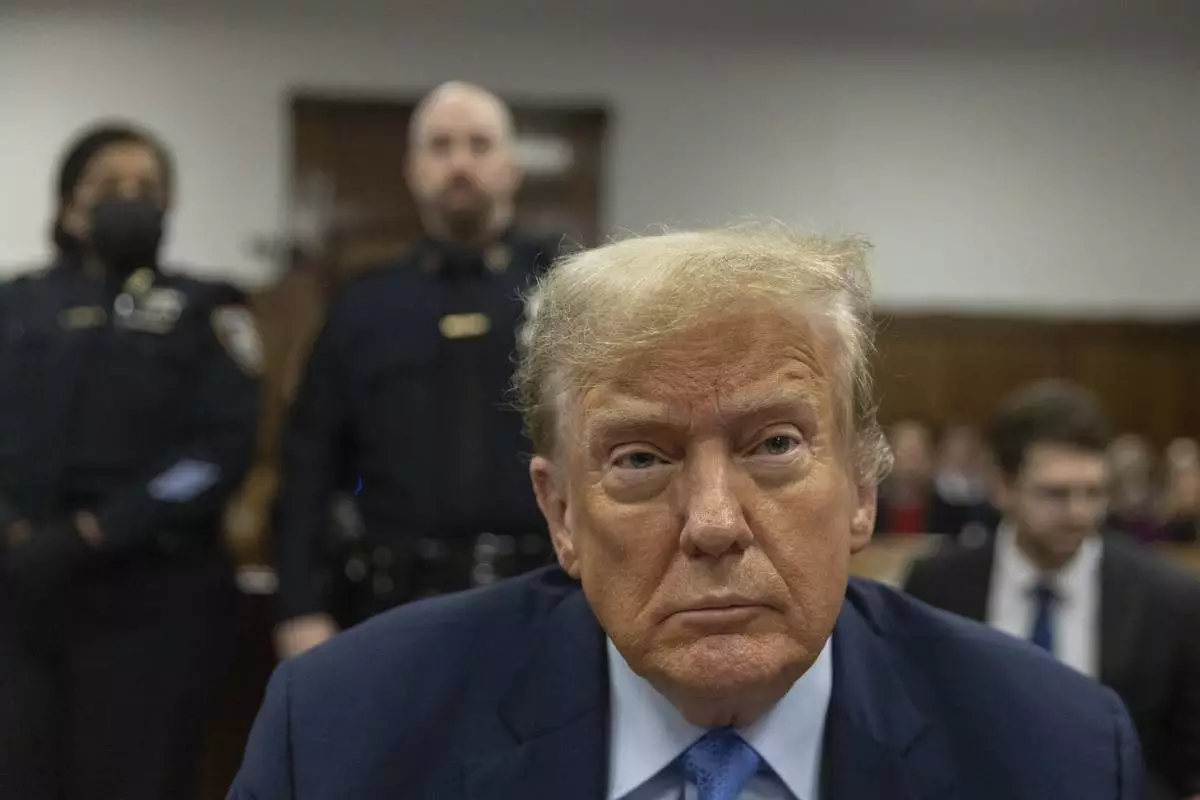
Former President Donald Trump appears at Manhattan criminal court before his trial in New York, Friday, April 26, 2024. (Jeenah Moon/Pool Photo via AP)
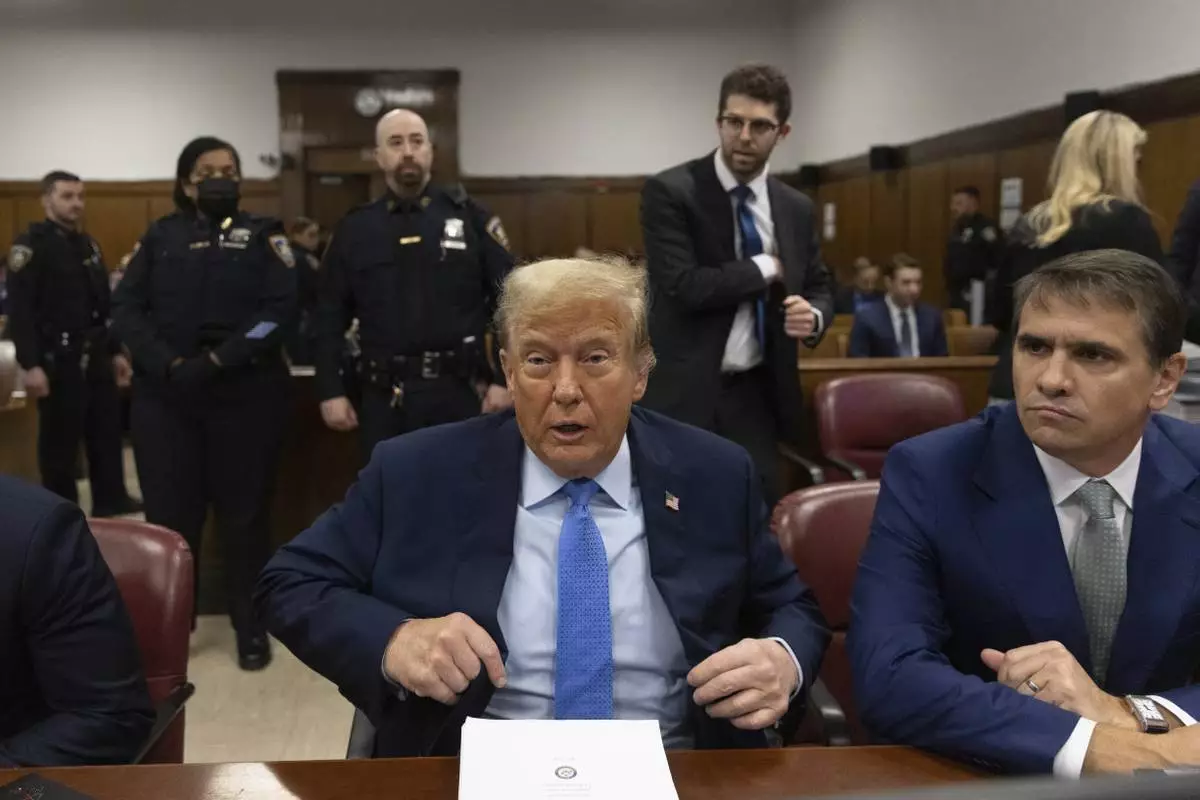
Former President Donald Trump appears at Manhattan criminal court before his trial in New York, Friday, April 26, 2024. (Jeenah Moon/Pool Photo via AP)
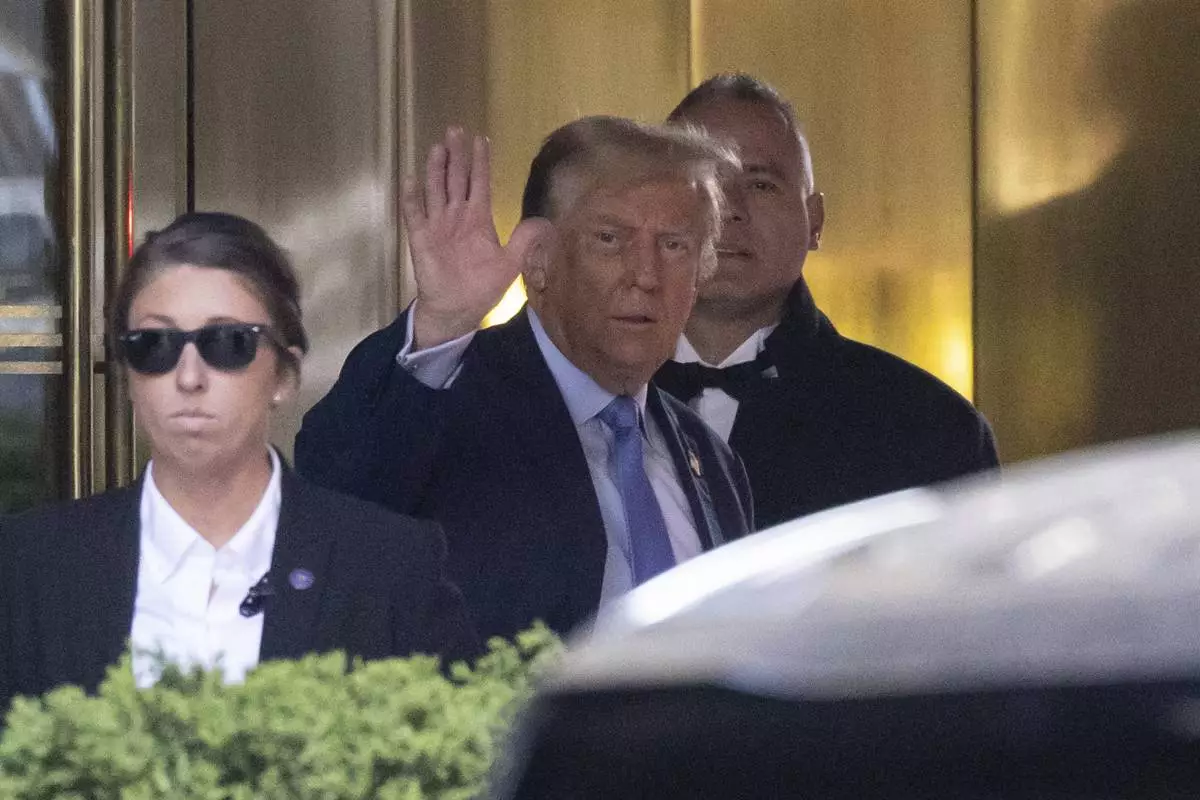
Former president Donald Trump leaves Trump Tower on his way to Manhattan criminal court, Friday, April 26, 2024, in New York. (AP Photo/Yuki Iwamura)
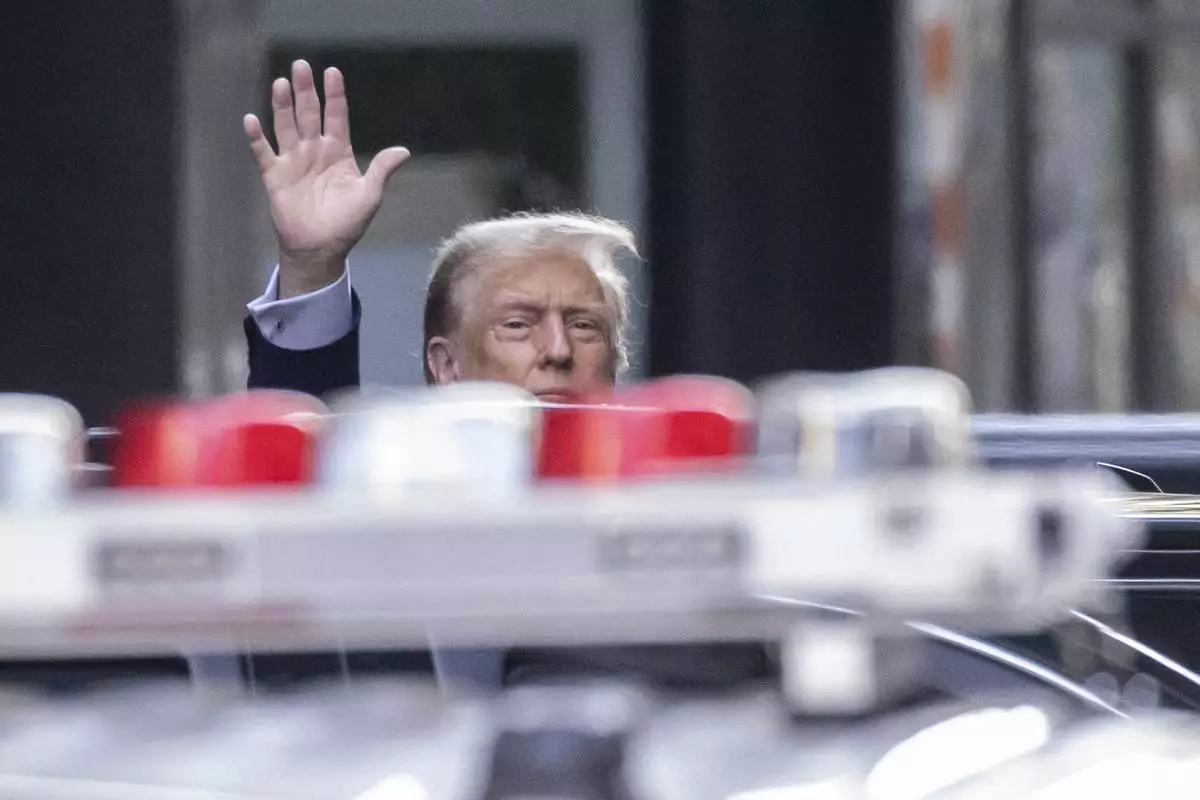
Former president Donald Trump leaves Trump Tower on his way to Manhattan criminal court, Friday, April 26, 2024, in New York. (AP Photo/Yuki Iwamura)












